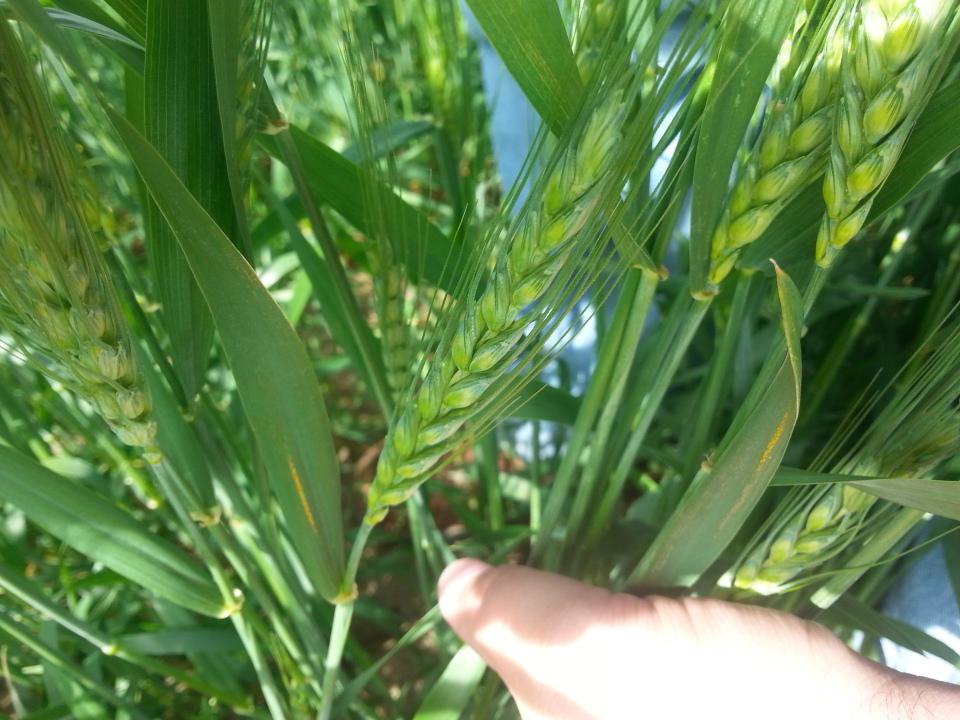A New Approach to Wheat Genetics

Genetics is a powerful tool in a producer's arsenal for most crops, but wheat genetics may be even more important than others. The K-State Wheat Breeding Program is using a new approach to address disease management, specifically the rust diseases that could impact future varietal decisions.
A common cycle has occurred over the years. Variety X is released and in year one, it is very resistant to leaf (Puccinia recondita f. sp. tritici) or stripe rust (Puccinia striiformis). Because it is the "brand new thing" the popularity of Variety X skyrockets and the acreage planted is massive. However, by year three or four, all of a sudden, Variety X is no longer resistant to rust, and in some cases is extremely susceptible to it. The real issue is Variety X's popularity.
Rust diseases have different races that are present at varying levels every year. While not identical, the changes in races of rust are similar to the changes in the flu virus year to year. The resistance gene (a single major gene) in the wheat varieties is effective against certain strains of rust. Wheat breeders select lines of wheat that are resistant to the rust races that are at their peak during selection.
The issue arises when the new varieties are released to the public and are resistant to the prevalent race. Essentially, the varieties themselves are "selectively eradicating" the strain that they are resistant to. However, the races that were not prevalent during the breeder's selections now have the opportunity to colonize the new variety which is why it loses its resistance.
Unfortunately, this appears to be a never-ending cycle if the major gene method of wheat breeding and selection are not adjusted. The K-State Wheat Breeding Program, led by Dr. Allan Fritz, has done just that. Instead of constantly searching for the next major gene, Allan and his team are incorporating minor gene resistance. This may sound counter-intuitive, but let's delve into the process.
Minor gene resistance is also called race non-specific resistance. While the historical approach has been race specific, this method should provide a much more stable resistance. The new approach actually incorporates multiple genes that provide some percentage of resistance to the plant. When enough of these genes are present in a variety, the wheat should be resistant to a wide variety of rust races which could break the boom-bust cycle that is so familiar.
One major advantage to the new method is that many of these race non-specific (or minor genes) are resistant to multiple types of rust (i.e. both leaf and stripe rust). This is a pronounced advantage for both the breeder and producer alike in that it's the proverbial killing two birds with one stone (or in this cases multiple smaller stones).
From the initial cross to varietal release in wheat takes an amazing amount of time and effort. Usually, this process takes at least eight to ten years. Allan and his team have been working on the race non-specific resistance for some time, but there have not been any varieties released yet. However, they are confident that this will change in the near future. If you have questions or would like more information, please call me at the office (620) 724-8233, or e-mail me at jcoltrain@ksu.edu, or visit the Wildcat Extension District website at www.wildcatdistrict.ksu.edu.
Contact:
Josh Coltrain
Crop Production and Local Foods Agent
Wildcat Extension District
jcoltrain@ksu.edu
(620) 724-8233
K-State Research and Extension is an Equal Opportunity Provider and Employer
